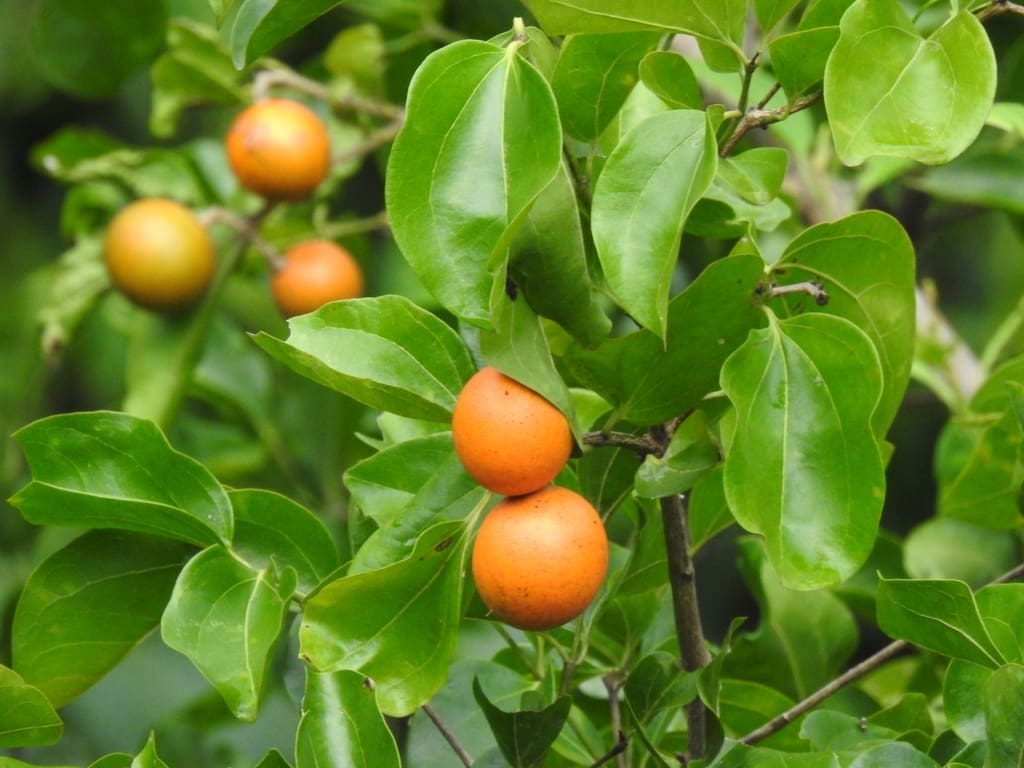
Nux vomica
Latin name: Nux vomica
Short name: Nux-v
Common name: Poison Nut | Quaker Buttons | Dog Button Tree | Vomiting Nut | Strychnine Tree
Primary miasm: Psoric Secondary miasm(s): Sycotic, Syphilitic
Kingdom: Plants
Family: Loganiaceae
- Symptomatology
- Remedy Information
- Differentiation & Application
Prepared from the dried seeds of Strychnos nux-vomica, a tree native to India, Southeast Asia, and northern Australia. The seeds contain two powerful alkaloids: strychnine and brucine, known for their intense neurological stimulation.
Traditionally used as a stimulant, emetic, and treatment for paralysis. Strychnine was once used medicinally in small doses but is now largely restricted due to toxicity. Also employed historically in pest control.
First proven by Samuel Hahnemann in 1805. Hahnemann’s Materia Medica Pura contains the original proving symptoms.
- Nervous system: marked hypersensitivity, reflex irritation, spasms
- Liver and portal circulation: hepatic congestion, sluggish digestion
- Stomach and gastrointestinal tract: dyspepsia, nausea, constipation
- Rectum: classic ineffectual urging, tenesmus
- Spine: hyperirritability, stiffness
- Mind: oversensitivity, irritability, ambition
- Sleep: disturbed, unrefreshing, due to mental overactivity
- Sexual organs: high desire, impotence, or suppressed function from overstimulation
- Warmth: wrapping up warmly, especially in bed [Clarke]
- Rest: temporary relief from rest after exertion [Kent]
- Short sleep: catnaps or brief rests often restore clarity [Hering]
- Evening: many symptoms ease in the later part of the day [Allen]
- Free discharges: vomiting, stool, or menstruation sometimes relieve tension [Clarke]
- Cold: open air, cold weather, uncovering, drafts aggravate most symptoms [Clarke]
- Mental exertion: study, concentration worsen headaches, irritability [Kent]
- Overeating or stimulants: coffee, alcohol, rich food trigger gastric and hepatic disturbances [Boericke]
- Morning: marked aggravation on waking, especially after a late night [Hering]
- Noise, odours, light: extreme irritability to sensory impressions [Allen]
- Anger, contradiction: mental disturbances, ailments from suppressed indignation [Kent]
- Bryonia – Both are irritable and constipated, but Bryonia prefers stillness and dryness; Nux is more restless and spasmodic.
- Chamomilla – Angry and sensitive, but Chamomilla is more whiny, tearful, and suited to children; Nux is adult, type-A.
- Sulphur – Both have digestive and skin complaints; Sulphur is messier, more philosophical and lazy, while Nux is exacting and industrious.
- Arsenicum album – Both are oversensitive and chilly; Arsenicum has more anxiety and fear, Nux is more aggressive and irritable.
- Complementary: Sulph., Sep., Lyc.
- Antidotes: Coff., Puls., Ign.
- Inimical: Zinc.
- Follows well: Bry., Puls., Ign.
- Precedes well: Sulph., Sep., Calc.
Nux vomica is the archetype of the modern man or woman—driven, overstimulated, addicted to coffee, deadlines, and mental exertion. The mind is sharp but overloaded, the digestion overworked, the nervous system strained to breaking. It is the remedy of excess and reactivity, where the organism, once resilient, begins to buckle under self-imposed demands. The vital force is stuck, spasmodic, trying to expel but cannot—seen in the mind, bowels, bladder, and sleep. It is a civilised suffering, born from ambition.
- Ideal for executives, students, or anyone breaking down under mental and lifestyle stress
- Use in hangovers, drug or coffee withdrawal, and functional GI disorders
- Often needed in first-aid after overeating, alcohol, or stimulant abuse
- Lower potencies (6C–30C) for acute GI states
- Higher potencies (200C–1M) for constitutional traits
- Responds well to early morning dosing with rare repetition
Mind
- Anger, from contradiction
- Irritability, trifles about
- Oversensitive to noise, odours, light
- Ailments from overwork
- Sleeplessness from mental activity
Head
- Pain, as from a nail
- Headache, morning on waking
- Headache, after mental exertion
Eyes
- Photophobia, reading agg.
- Spasms, eyelids
Stomach
- Nausea, after eating
- Heartburn, after coffee
- Vomiting, from alcohol
- Craving, stimulants
Rectum
- Constipation, with frequent ineffectual urging
- Tenesmus, after stool
- Haemorrhoids, painful, bleeding
Urinary
- Urging, frequent, small quantity
- Retention, from cold
Sleep
- Wakes at 3am, cannot sleep again
- Unrefreshing sleep
- Dreams, anxious, business
Skin
- Itching, without eruption
- Urticaria, after indigestion
Generalities
- Worse, morning
- Worse, cold air
- Better, warmth
- Ailments from stimulants, mental exertion
Samuel Hahnemann – Materia Medica Pura: Primary proving source; described the full range of Nux’s irritability, digestive issues, and oversensitivities.
James Tyler Kent – Lectures on Homoeopathic Materia Medica: Provided deep insights into mental characteristics, modality structure, and clinical applications.
C. Hering – Guiding Symptoms of Our Materia Medica: Contributed expanded details on sleep, dreams, fever, and rectal symptoms.
William Boericke – Pocket Manual of Homoeopathic Materia Medica: Offered reliable clinical tips, liver indications, and modality refinements.
John Henry Clarke – Dictionary of Practical Materia Medica: Detailed notes on digestion, liver, nose, and eye symptoms, and linked to miasmatic insights.
Timothy Allen – Encyclopaedia of Pure Materia Medica: Helped with subtle distinctions in gastric, ear, and emotional indications.
